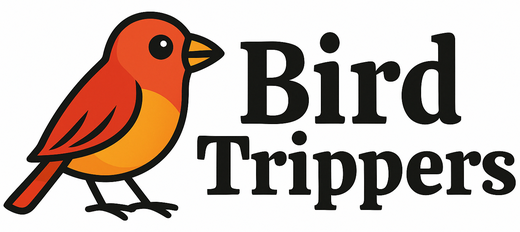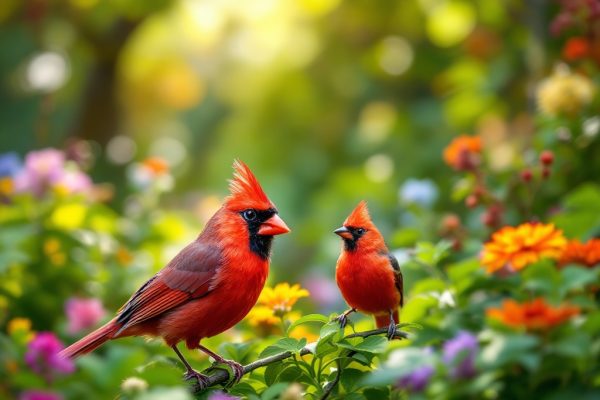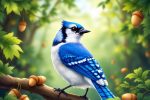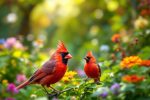Prettiest Birds You Can Find in Europe
Discover the dazzling world of Europe’s vibrant songbirds! From the melodious Nightingale to the striking Eurasian Goldfinch with its red, yellow, and black feathers, Europe’s avian diversity is breathtaking. Explore the unique adaptations of the fish-hunting Kingfisher and the insect-catching Bee-eater. Learn about the Alpine Citril Finch and the iconic Puffin. Dive into this article to explore these feathered wonders and more!
Important information

- The European Bee-eater is known for its vibrant colors and graceful flight, hunting insects in mid-air.
- The European Goldfinch has a striking red, yellow, and black plumage and feeds mainly on thistle and dandelion seeds.
- The Common Kingfisher dives swiftly into water to catch fish, aided by its long beak and vibrant blue and orange feathers.
- The Lammergeier (bearded vulture), one of Europe’s largest birds of prey, has a unique diet of bone marrow, dropping bones from heights to crack them open.
- The Eurasian Spoonbill uses its distinctive spoon-shaped bill to sweep through shallow water for small aquatic creatures.
Colorful Songbirds of Europe
Europe is home to a variety of vibrant songbirds. Among them, the European Bee-eater is notable for its colorful plumage and graceful flight. Another captivating species is the Eurasian Goldfinch, with its striking mix of red, yellow, and black. The European Kingfisher also adds to the continent’s avian artistry with its bright blue and orange feathers. These birds captivate us with their melodious songs and charming appearances. The nightingale, for example, is famous for its beautiful melody. The Scarlet Rosefinch is notable for its vivid red color. The Eurasian Blue Tit enchants with its lively charm. The Eurasian Golden Oriole captivates with its bright yellow plumage and melodious song. The European Roller boasts stunning blue and green feathers. The Barn Swallow is admired for its elegant shape and swift movements.
Alpine Citril Finch
High in the subalpine coniferous forests and alpine meadows dwells the Alpine Citril Finch (Serinus citrinella), a close relative of the European Goldfinch.
European Goldfinch
The European Goldfinch is a striking bird with a vibrant mix of red, yellow, and black feathers. This colorful finch also boasts a beautiful song and enjoys a diet primarily of seeds, particularly thistle and dandelion. These birds often gather and forage for food in flocks.
Bullfinch
Bullfinches, with their vibrant plumage, are a striking presence in European gardens.
Exotic and Striking Birds
Kingfishers, known for their vibrant plumage, execute dramatic dives to snatch fish from the water. Bee-eaters, equally stunning in their coloration, instead hunt insects mid-flight. Puffins, with their distinctive beaks, nest on precarious cliff faces. These diverse birds showcase remarkable adaptations for their unique lifestyles.
Common Kingfisher
The Common Kingfisher is a striking bird with incredibly vibrant blue and orange feathers. Its long, pointed bill is perfectly adapted for catching fish. Its swift dives into the water demonstrate remarkable agility. The shimmering, iridescent plumage adds to its beauty, making this European bird a truly stunning sight.
European Bee-eater
The European bee-eater is a dazzling bird with a vibrant plumage of turquoise, rust, and gold. Its slender body, accented by long, elegant wings and a pointed tail, is a marvel of nature. While bees are its primary food source, this striking creature also preys on other flying insects. European bee-eaters are colonial nesters, excavating tunnels in sandy banks to raise their offspring.
Atlantic Puffin
Instantly recognizable by their brightly colored, triangular beaks, Atlantic Puffins become even more vibrant during breeding season. Their striking black and white plumage contrasts sharply with these colorful beaks. While their waddling gait on land evokes a charming, almost clownish image, they transform into graceful divers underwater, expertly pursuing fish with remarkable skill.
Mountain and Forest Birds
The European crested tit thrives in coniferous forests, particularly those dominated by spruce trees.
The Scottish crossbill prefers the Caledonian pine forests of Scotland, feasting on the abundant pine cone seeds.
Uniquely, the Corsican nuthatch resides exclusively in the Corsican pine forests of its namesake island.
European Crested Tit
The European crested tit (Lophophanes cristatus) is a small, acrobatic songbird inhabiting Europe’s coniferous forests. Its striking black and white crest makes it easily identifiable as it flits through branches searching for insects and seeds.
Scottish Crossbill
The Scottish crossbill (*Loxia scotica*) thrives in the Caledonian forests of Scotland, its crossed bill perfectly adapted for extracting seeds from pine cones. This unique finch represents Britain’s only endemic bird species, a symbol of the region’s rich biodiversity.
Corsican Nuthatch
The Corsican nuthatch, found only on the island of Corsica, thrives in the local Corsican pine forests. Its distinctive calls make it easy to identify for birdwatchers.
Birds of Unique Habitats
The Marmora’s Warbler thrives in the dense thickets of maquis shrubland. The Eurasian Spoonbill favors the shallow waters of wetlands and coastal regions. The European Roller calls open woodlands and cultivated fields home.
Marmora’s Warbler
The small, melodious Marmora’s Warbler inhabits the Mediterranean islands of Corsica and Sardinia. Known for its shyness, this elusive bird is a treat to spot.
Eurasian Spoonbill
The Eurasian Spoonbill, a frequent sight for European birdwatchers, is instantly recognizable by its distinctive spoon-shaped bill. This remarkable bill allows the spoonbill to forage effectively, sweeping through shallow water to capture small aquatic creatures. Observing these elegant birds in action is truly captivating.
European Roller
The European Roller captivates birdwatchers with its vibrant blue and green plumage, contrasted by a warm brownish breast. Its elongated wings and tail ensure easy identification, especially mid-flight when the striking colors are most prominent. The bird also has a distinctive call.
Birds with Distinctive Features
The Lammergeier, also known as the bearded vulture, is easily recognizable by its distinctive black feathers resembling a beard beneath its beak and its reddish-orange plumage. Another readily identifiable bird is the Red-legged Partridge, with its red legs and face, grey breast, and striped flanks. The Rock Partridge, while sporting grey plumage, boasts a vibrant orange throat and eyebrow, creating a striking contrast.
Lammergeier
The Lammergeier, also known as the bearded vulture, is a remarkable bird of prey inhabiting mountainous regions. Its diet is especially noteworthy, consisting almost entirely of bone marrow. To access this unusual food source, the Lammergeier employs a unique hunting strategy: dropping bones from great heights onto rocks below to crack them open. With a wingspan reaching nearly ten feet, this impressive creature ranks among Europe’s largest birds of prey, making it a truly magnificent sight.
Red-legged Partridge
Red-legged partridges are easily identified by their crimson legs and beaks. These game birds thrive in the farmlands and open fields of Europe.
Rock Partridge
Native to Southern Europe, rock partridges thrive on rocky hillsides and mountains. Their plumage offers remarkable camouflage, blending seamlessly with the stones. This natural disguise is essential for protection against predators such as golden eagles and foxes.

















